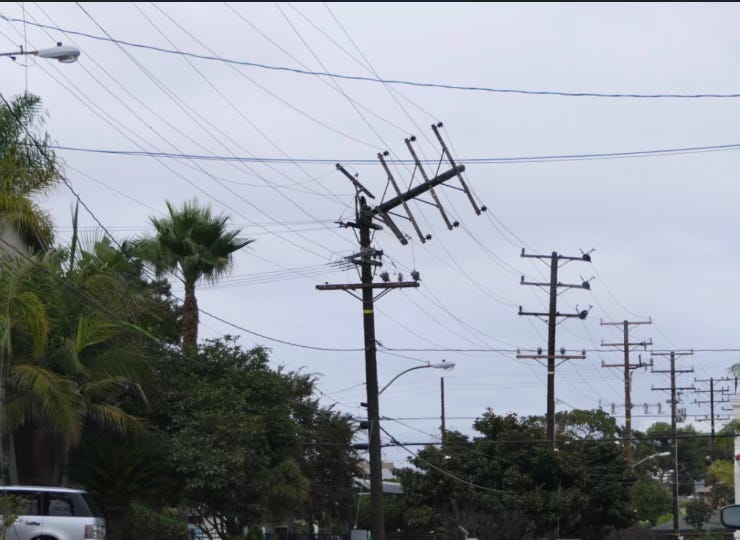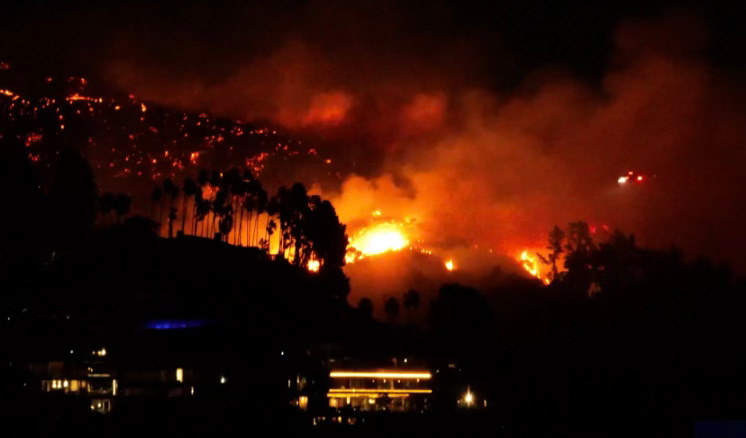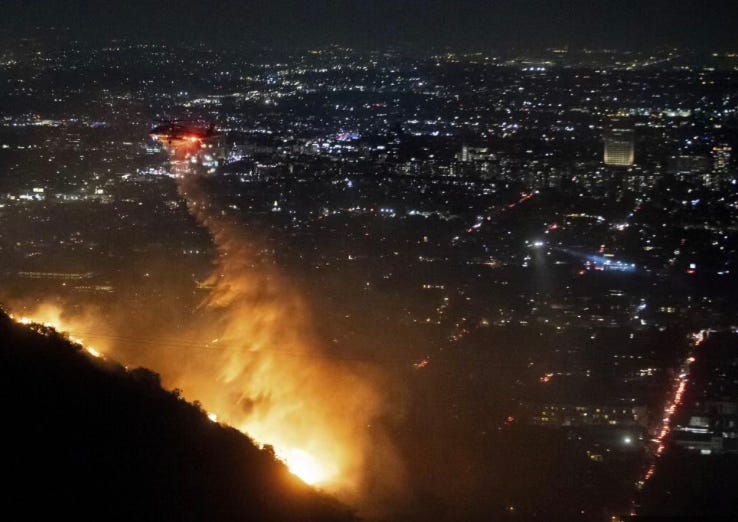My Experience Evacuating from the LA Fires
On Tuesday, January 7th, around 4 PM PST, my sister texted me, asking if we were near the fires or in any danger. Like most Angelenos, I had no idea there was even a fire in the Palisades. After a quick Google search, I reassured her that the fire was too far away to affect us; it was burning in the celebrity-rich part of LA County.
That day, the winds were intense—tropical storm force, maybe even Category 1 hurricane-level. When my husband left for work in the morning, I remarked how the trees were bending under the wind, and it was howling outside. Despite the eerie weather, we went about our day as usual.
By 7:30 PM, we lost power. We assumed the strong winds had downed power lines but still felt no danger from the distant Palisades fire. However, as the night wore on, the situation took a more alarming turn. Sirens blared non-stop outside, trees were snapping, and branches flew everywhere, littering the roads. Power outages extended for blocks, making it feel like our entire grid was down.



Living in the only apartment building in a residential area surrounded by houses, we began hearing reports of looting nearby. My biggest concern became the downed power lines, as dry branches and brush covered the roads and rooftops. It was easy to imagine a fire starting from a spark. Reports were also surfacing of water hydrants running dry as firefighters tried to battle the flames. Some reservoirs were empty—a shocking revelation considering California’s long-standing practice of dumping fresh rainwater into the Pacific Ocean instead of storing it. For years, we’ve known this to be an issue, yet no significant changes have been made to address it. Add to that California’s refusal to conduct controlled burns or clear dead brush, and it becomes clear how these conditions create a tinderbox ready to ignite.
I wasn’t worried about the Palisades fire directly; I was worried a new fire could start nearby due to the conditions—or worse, from arson. Strange activity was unfolding across LA. People were exploiting the chaos, using the large fire as cover to start others.
By 9:30 PM, I packed an emergency bag and readied the cat carriers. My husband thought I was overreacting, insisting the Palisades fire couldn’t reach us. But I was more concerned about the power lines, wind-driven debris, and potential arsonists. As we watched live videos of fires across the city, my husband began to share my unease.
At 10:35 PM, an emergency alert lit up our phones: “Gather pets, loved ones, important documents, and prepare to leave.” I already had our bag packed but now loaded the cats into their carriers and grabbed last-minute essentials. In that moment, I realized how little truly mattered. Though I’ve always considered myself sentimental, the decision of what to take was surprisingly easy. My packed items included:
A USB drive with our wedding photos
Both laptops, external hard drives, and power cords
A folder with ID documents
My grandma’s Bible, brooch, and jewelry
My dad’s ashes and urn
My cat’s ashes
A Ted Williams autographed baseball I gifted my dad
My dad’s watch, which belonged to his older brother
I wore my grandma’s fur coat over leggings and a sweater, packed no clothes, and didn’t even consider my wedding dress. As renters, we didn’t have to worry about property, and it was liberating to see how few possessions truly mattered.
By 10:45 PM, we were on the road, heading to my in-laws in the desert. By 11:08pm, another emergency alert told us to “leave now!” As we rounded the freeway, flames came into view behind us—the Hollywood Hills were on fire. It was surreal, like a scene from a disaster movie, watching the flames disappear in our rearview mirror.

We arrived at my in-laws around midnight. Sharing a spare room with our cats and sleeping on the floor, we tracked the fire through an app called Watch Duty. It was infinitely more useful than the Los Angeles County emergency website, which was clunky, confusing, and unreliable.
The next day, fires continued breaking out closer to our neighborhood. The Sunset Fire, just 15 minutes away, would’ve been visible from our home. We were in a designated Red Flag zone with dangerous wildfire conditions and poor air quality. The Sunset Fire’s proximity to us and the fact it was still at zero containment when we went to bed made it a tense night. We watched images of the hills burning just miles from the Hollywood sign, which is visible from our building.


Having gone to bed feeling incredibly uneasy and tense about what we could wake up to in the morning, it was a wonderful relief to wake up to the news that firefighters had stopped its forward progress. By midday, the fire was fully contained, and evacuation orders for our area were lifted.
After verifying power had been restored, we debated whether it was safe to return home. By late Thursday night, with winds dying down and the Sunset Fire under control, we decided to drive back. Around an hour into our journey, we received another emergency alert: “Prepare to leave,” followed minutes later by a second: “Fast-moving wildfire in your area. Leave now!”

Our hearts stopped, thinking we were driving into danger. The alerts directed us to a malfunctioning website, alertla.com, where critical links didn’t work. Instead of providing a simple list of evacuation zones, the site relied on a GPS-based map that failed to load. Desperately trying to figure out if we were driving through an evacuation zone or if it was for our neighborhood, I finally called 911.
The operator informed us it was a system error. The same mistake had happened earlier that day when evacuation orders were mistakenly sent to the entire county. Though relieved, the panic those alerts caused was inexcusable.
We made it home safely. The roads were lined with brush and debris, but with power restored, the downed wires no longer posed an immediate risk. While we’re staying vigilant, we now have a clearer idea of how to prepare for future evacuations.
Reflecting on the experience, I feel we handled it well. We left immediately upon the first evacuation order, avoiding the gridlock that followed. If there’s a next time, I’ll pack a slightly larger bag and remember my medications. Thankfully, I was able to get a prescription refilled near my in-laws.
The fires exposed not just the physical dangers but also the glaring inefficiencies in Los Angeles County’s emergency management. Between chaotic websites, unreliable alerts, and widespread mismanagement, it’s clear there’s much to improve. For years, we’ve seen the consequences of poor planning: no controlled burns, no clearing of dead brush, and rainwater wasted by being dumped into the ocean. These issues have compounded to create the perfect storm for disasters like this, along with the Santa Ana Winds.
For now, we’re grateful to be safe and have learned valuable lessons from this experience. Our prayers continue to be with those who have lost everything, whose homes and businesses continue to be in the potential path of the fires, and everyone affected by this man-made tragedy.
More coverage to come, including some legal analysis regarding everything that has gone wrong on the local and state government response level as well as the legality of cancellation of fire insurance policies, and of course a roundup of the most credible conspiracy theories along with my personal theories and advice regarding best practices for emergency preparedness.




